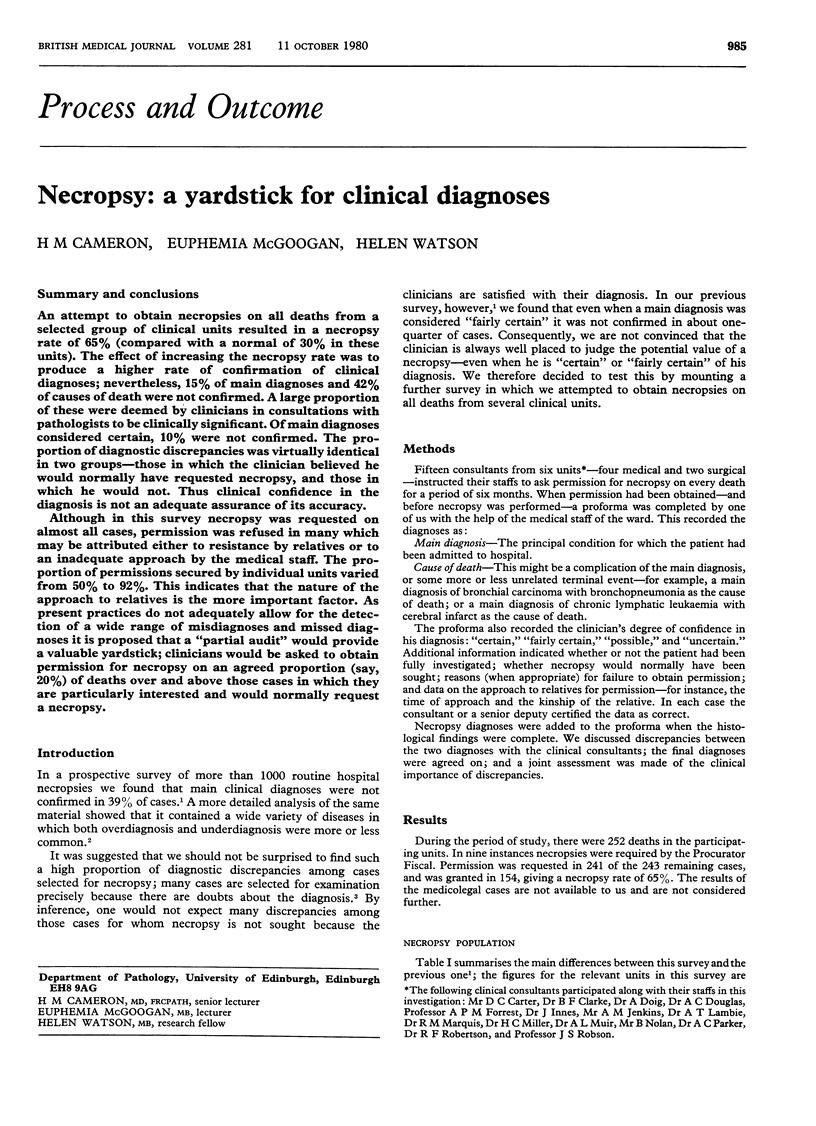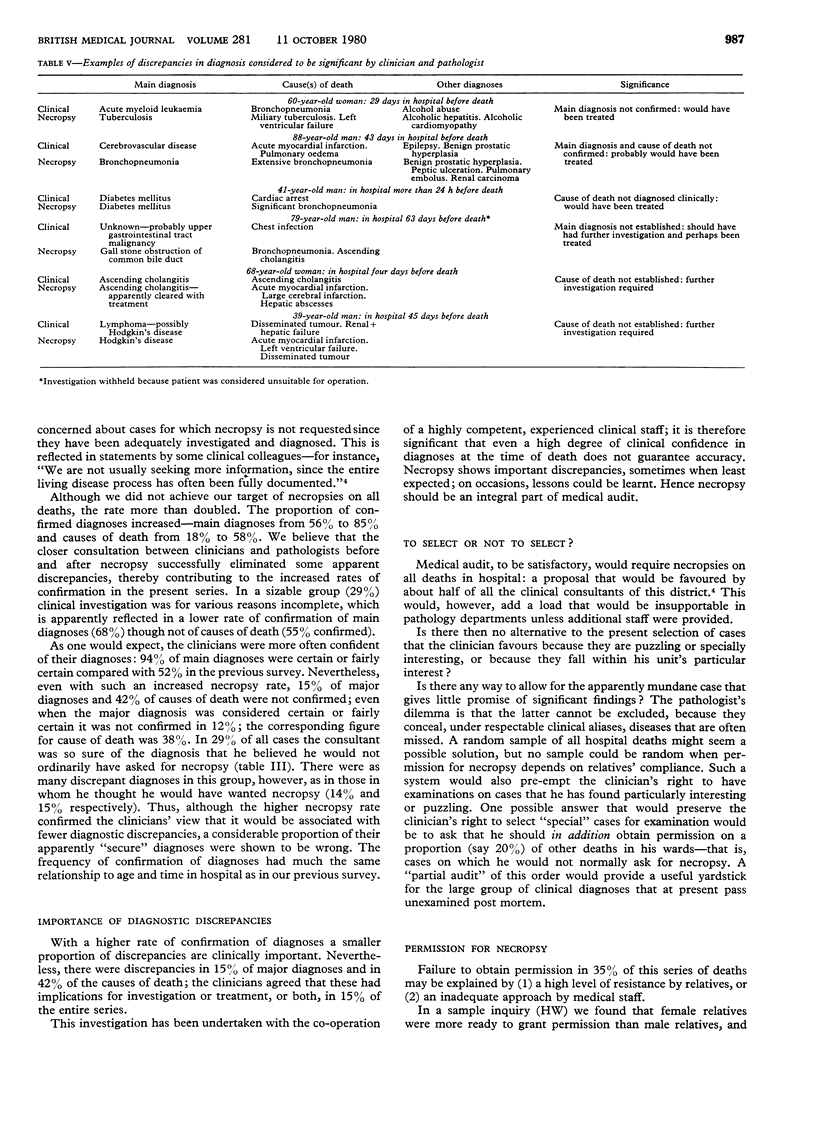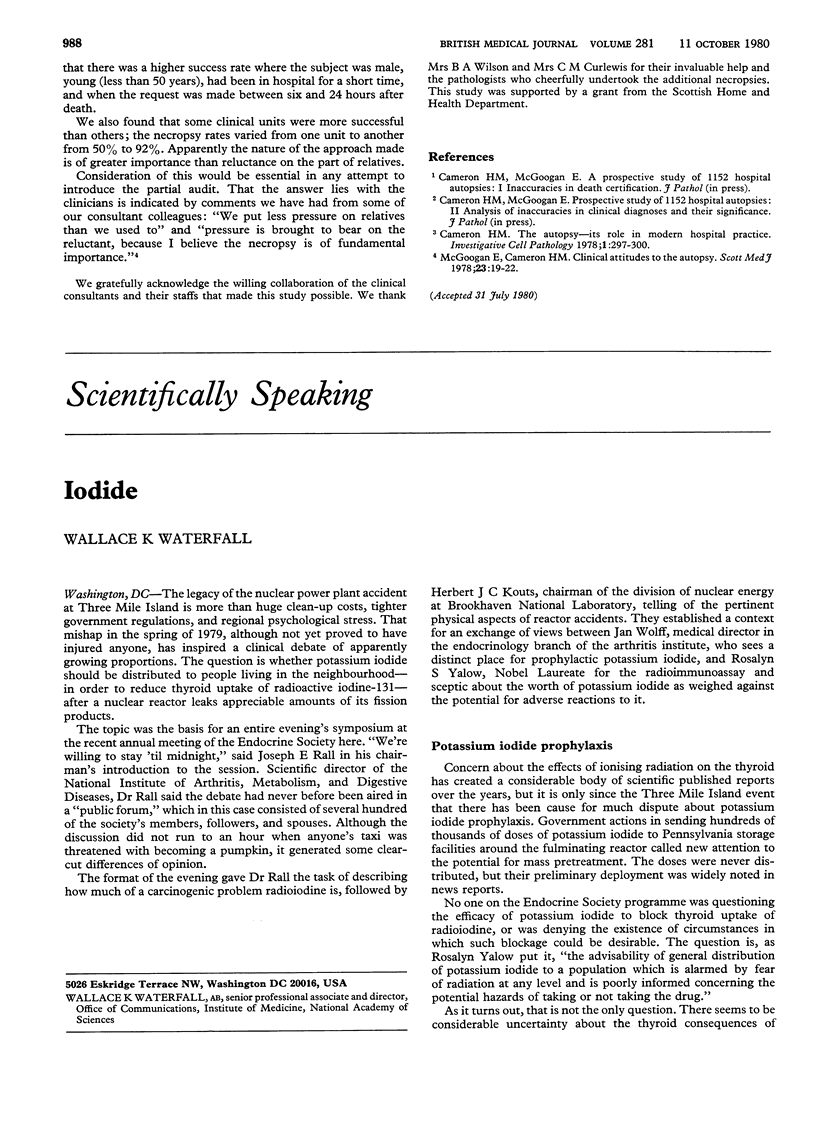Abstract
An attempt to obtain necropsies on all deaths from a selected group of clinical units resulted in a necropsy rate of 65% (compared with a normal of 30% in these units). The effect of increasing the necropsy rate was to produce a higher rate of confirmation of clinical diagnoses; nevertheless, 15% of main diagnoses and 42% of causes of death were not confirmed. A large proportion of these were deemed by clinicians in consultations with pathologists to be clinically significant. Of main diagnoses considered certain, 10% were not confirmed. The proportion of diagnostic discrepancies was virtually identical in two groups--those in which the clinicial believed he would normally have requested necropsy, and those in which he would not. Thus clinical confidence in the diagnosis is not an adequate assurance of its accuracy. Although in this survey necropsy was requested on almost all cases, permission was refused in many which may be attributed either to resistance by relatives or to an inadequate approach by the medical staff. The proportion of permissions secured by individual units varied from 50% to 92%. This indicates that the nature of the approach to relatives is the more important factor. As present practices do not adequately allow for the detection of a wide range of misdiagnoses and missed diagnoses it is proposed that a "partial audit" would provide a valuable yardstick; clinicians would be asked to obtain permission for necropsy on an agreed proportion (say, 20%) of deaths over and above those cases in which they are particularly interested and would normally request a necropsy.
Full text
PDF



Selected References
These references are in PubMed. This may not be the complete list of references from this article.
- MacLean G. D., Main R. A., Anderson T. E., Best P. V. Connective tissue ossification presenting in the skin. Arch Dermatol. 1966 Aug;94(2):168–174. [PubMed] [Google Scholar]
- McGoogan E., Cameron H. M. Clinical attitudes to the autopsy. Scott Med J. 1978 Jan;23(1):19–22. doi: 10.1177/003693307802300106. [DOI] [PubMed] [Google Scholar]


